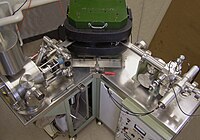Isotope analysis

Have you ever heard of atoms? Atoms are like tiny little building blocks that make up everything around us, like the air we breathe and the water we drink. Now, not all atoms are the same. Some atoms can have different numbers of particles called protons and neutrons, which are like the little workers that make the atom work.
When scientists study these atoms, they can use a special tool called isotope analysis. This tool helps them figure out how many protons and neutrons are in each atom. This is important because atoms with different numbers of protons and neutrons can react to things around them in different ways.
To use isotope analysis, scientists first have to collect a sample of the thing they want to study. For example, they might collect a sample of soil from the ground or a piece of a plant from a garden. Then they use a special machine to break down the atoms in the sample and see what types of atoms are in there.
Once they know what types of atoms are in the sample, scientists can use that information to learn more about the thing they studied. For example, they might want to know where the plant grew or what kind of food the animal ate. By looking at the different types of atoms in the sample, they can figure out the answers to those questions and more.
So, isotope analysis might sound complicated, but it's really just a way for scientists to study atoms and learn more about the world around us. Pretty cool, right?
When scientists study these atoms, they can use a special tool called isotope analysis. This tool helps them figure out how many protons and neutrons are in each atom. This is important because atoms with different numbers of protons and neutrons can react to things around them in different ways.
To use isotope analysis, scientists first have to collect a sample of the thing they want to study. For example, they might collect a sample of soil from the ground or a piece of a plant from a garden. Then they use a special machine to break down the atoms in the sample and see what types of atoms are in there.
Once they know what types of atoms are in the sample, scientists can use that information to learn more about the thing they studied. For example, they might want to know where the plant grew or what kind of food the animal ate. By looking at the different types of atoms in the sample, they can figure out the answers to those questions and more.
So, isotope analysis might sound complicated, but it's really just a way for scientists to study atoms and learn more about the world around us. Pretty cool, right?
